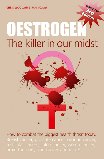At CANCERactive we worry. All too often we find nurses and doctors chanting out some repetitive myth when solid research suggests the opposite.
Perhaps Preventative Double Mastectomies (PDM) provide another of these occasions. Clearly fear of cancer is an issue that makes women consider such a dramatic step. But what does scientific research show to be the truth?
The University of Michigan Medical School studied data on 1,447 women all of whom had been diagnosed with breast cancer in one breast.
When given the option of having a PDM
• 20 per cent strongly considered having PDMs
• Approximately 8 per cent actually went ahead with the procedure
• Tellingly, those who had been tested for a genetic issue were 10 times more likely to go ahead with the surgery, whether the test was positive or negative. Fear was stronger that test results.
Not surprisingly, according to researcher Sarah Hawley ‘fear of cancer’ outweighs rationality.
So what is the truth?
According to a National Cancer Institute sponsored research study specifically designed to answer the question, 70 per cent of women who have PDMs are wasting their time. The surgery was unnecessary.
This major study (involving researchers from Memorial Sloan-Kettering Cancer Center, the University of Michigan, the University of Southern California and Wayne State University) involved almost two thousand women followed over a number of years (2013, American Society of Clinical Oncology).
The problem is, of course, ‘how can you tell if you are going to be one of the 30 per cent of women who may benefit’. And here both research studies suggested that oncologists had a more objective and responsible role to play.
The researchers concluded that only where there was a strong family history and a genetic issue was the surgery appropriate. So, in her case, Angelina was correct. But for 70 per cent of women, fear is overcoming the evidence.
So what turns BRCA1 on?
BRCA1 and BRCA2 are present in some 7 per cent of women. The big question is what turns them on? Researchers from Queen’s University, Belfast have discovered that BRCA1 is definitely turned on by high levels of Oestrogen, the female sex hormone, which is also made from fat stores in the body. This is surprising because many women with Triple Negative Breast Cancer (TNBC) have the mutation.
Cancer Research UK have suggested that having BRCA1 results in an 85 per cent higher risk of breast cancer and up to a 40 per cent risk of ovarian cancer.
A team of scientists led by Dr Kienan Savage has shown that high levels of oestrogen damage the tissues in the breast and ovaries of women with the BRCA1 mutation. Apparently, women with the normal gene control the breakdown products of the hormone, whereas the mutated gene doesn’t aid ‘clearout’ and this leads instead to more damage.
 There’s a lot you can do for yourself. In the book ‘Oestrogen – the killer in our midst’,
There’s a lot you can do for yourself. In the book ‘Oestrogen – the killer in our midst’,
we give you a checklist to control your oestrogen levels in a totally natural, everyday way.
These involve cutting pesticides, toxins in the home, but also sleeping well, taking indole3carbinol/DIM and building up levels of carotenoids in the body (red and tallow peppers, sweet potato, greens like kale, broccoli, wheatgrass, chlorella). And more. There is a lot you can do to protect yourself.
"If you are already thinking of buying these products you might like to see what Natural Selection has to offer."